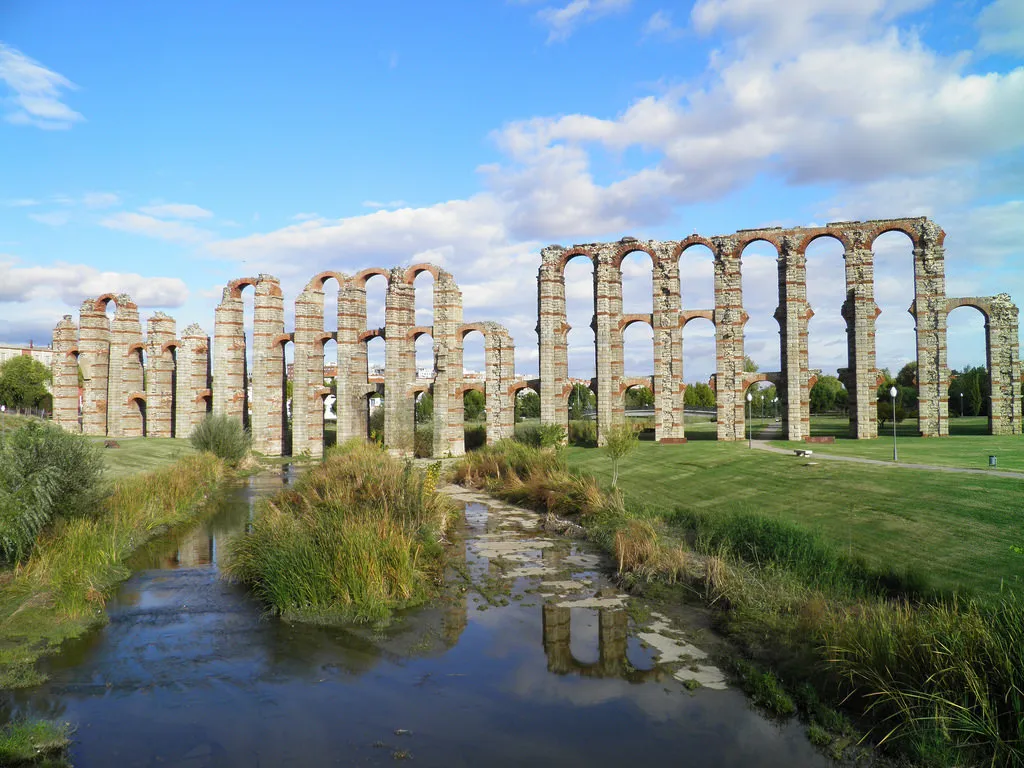Abracadabra: Using AI to Imitate the Creator
Published on: May 15th, 2025
I love magic. I’ve probably watched movies like the Prestige and the Illusionist more times than most people. But I recently learned the origins of a phrase that magicians love to say: “Abracadabra.”
It comes from the Ancient Aramaic phrase, “Avra Kedavra,” meaning “I create as I speak.”
We worship a God who is creative, the first sentence of the Bible tells us. But how does he create? We find out in the following verses that he does so with his speech.
Words are how the God of the universe chose to express his creativity. We get to imitate his creativity using our own words. And it’s easier to do this now than ever.
Because of AI, we live in a time where anyone can create anything - pictures, video, and interactive experiences - using just words.
It feels like magic.
With such a powerful tool at our disposal, should we not meditate on how this can be used to create things that will honor our Creator?
How To Pick Brand Colors Without Causing a Church Split
Published on: March 26th, 2025
Okay, so the title is a little hyperbolic.
But picking colors really is one of the most mysterious and notional aspects of branding.
That’s why today I want to help demystify this part of a church rebrand.
Demonstrating intentionality is arguably the most important part of any church rebrand, and that applies not just to color but to every design choice.
If you can show a proven, meaningful process was used, it can generate tremendous buy-in and overcome objections.
In this post, I’ll overview that proven, meaningful process. We’ll look at where to find good colors and how to harmonize them, ultimately creating a pleasing, God-glorifying palette.
A color palette built with this process is hard to argue with!
Where to Find Good Colors
The short answer is: in God’s created world!
I recently was listening to this podcast episode about color, painting, and art (not as boring as it sounds).
The guest, Forrest Dickinson, talked about how Scottish tweed makers will go out into the countryside, capture a swatch of colors from their environment, and use those colors in their designs.
What’s stopping us from doing the same thing?
Find or take a photo of your church building, its surroundings, or something in your environment that fits the aesthetic you’re going for.
This is going to be your reference image.
How to Harmonize Your Church Colors
Color is light. And much like sound, it has different wavelengths that represent different parts of a spectrum.
When those wavelengths align in certain patterns, they harmonize.
A great place to start is by choosing what I like to call “Core Colors.” Your core colors are the duo, trio, or quartet that glue your whole brand together.
Start by choosing a light and a dark. This could be white and black if you’re going for a very bold and edgy vibe. I like to choose an off-white or pastel from the highlights in my reference image and a dark color from the shadows.
Then, choose one or two more saturated colors between your light and dark in terms of brightness. These should be more vibrant and pop a little more.
Type out your church name in a Word Doc or in Canva. Make the background one color and the text another color from your core color palette.
Try different combinations for the text and background. Is the text readable in most of them? If not, you may want to adjust the values until they have better contrast.
If you follow these steps, you’re more likely than not to come up with a pleasing, Christ-honoring harmony of colors that will be functional in print and digital spaces!
Try it for yourself.
Why God Gave Us Visual Aids (Joshua 4)
Published on: August 13th, 2025
It’s no secret that people remember images better than words. Studies show we can remember 65% of visual information after 3 days, compared to just 10% of written/spoken info.
That’s a 6x increase in retention! But why does it matter for churches? Good question.
Something I’ve learned is that a brand isn’t just a logo, colors, or fonts. A church brand is an opportunity to tell the story of what God has done and is doing in that local ministry.
Said another way: your brand is the visual aid for people to easily remember what their church stands for, and the story God is telling there.
This ties in closely to the examples we have in the Bible of when the Lord commanded that a monument be built to signify his mercy and might.
In Joshua 4:1–10, God tells the Israelites to take twelve stones from the Jordan River and set them up as a memorial. This visual monument served as a lasting symbol to help future generations remember how the Lord miraculously stopped the river’s flow, allowing His people to cross on dry ground.
These stones were set up intentionally as a tangible visual aid to reinforce the Israelites’ generational memory and faith.
To add even more layers, God also instructs that twelve stones be used. Why twelve? To symbolize the twelve tribes who crossed over the Jordan that day.
In the same way, designing an intentional brand identity with symbolism and permanence is the most powerful way to help your people remember their God-given identity as a body and look to Christ, week in and week out.
This Will Make Your Church Branding More Timeless
Published on: August 6th, 2025
Strip everything away, give your church a generic name, and make the logo a cross. Go black and white with your color scheme.
Congrats - you have a timeless brand!
I’m being a little bit sarcastic, but there’s an element of truth here. Over-simplification is usually the fastest, easiest way to a truly “timeless” look.
However, it’s not the only way.
And for churches, it’s almost never the best way.
The history of the world is timeless by definition, but definitely not simple. God’s creative and recreative work is anything but minimalistic.
The way God works is simple but deep, focused but rich with meaning.
So too is the story being woven together in your ministry, whether it’s 200 years old or a brand new church plant.
What is God’s perspective of your church? If you want a timeless brand identity, this is the question you have to answer.
Once you start narrowing it down, your logo colors and fonts become clear and easy choices.
Rather than trying to become timeless by using Helvetica and no colors in your brand guidelines, you should be looking for ways to incorporate the truth of who God says you are as a congregation.
Does it take more work and intentionality?
Absolutely.
Is it hard?
Anything worth doing is.
Boulder Problems and Branding
Published on: July 25th, 2025
I’m an extreme sports fan, and those who know me know that I would never pass up a chance to try one. Of course, I’m no Red Bull athlete, so it usually looks like me attempting the low-stakes version of whatever the true pros are doing.
One of those sports I’ve casually enjoyed since high school is rock climbing, and believe it or not, there’s a nice analogy to branding here.
In bouldering (climbing lower with no ropes above a crash mat), a route or particular climb is called a boulder problem.
A beginner climber like me can climb any V1 boulder problem with ease and most V2s with moderate difficulty. Some V3 problems are too challenging at my skill level, while others are doable after a few attempts.
(Don’t be too impressed - the scale goes up to V17).
There was this one V3 problem giving me trouble on my last visit. I kept falling over and over, until I eventually felt so fatigued and frustrated that I gave up.
Why am I sharing this story?
I think it’s appropriate that they’re called “problems,” because they have a solution that takes more than brute force and raw strength to solve. They take strategy.
All around me were more experienced climbers who could have showed me the trick to get past my sticking point. With their expert advice, I could have probably reached my goal with only a couple of tries.
Even better, I probably could have learned tips from them for other problems too.
Here’s the thing:
If you want the fastest way to your goal, don’t be afraid to seek guidance from someone who’s done it before.
Two Strategies to Blast Through Creative Block
Published on: June 26th, 2025
Every day around mid-morning, I take a bathroom break and that’s when I write these posts - gross I know, but it’s the perfect amount of time and I have no distractions (now you won’t be able to get that image out of your mind, so you’re welcome).
Context aside, when I’m motivated and inspired it’s easy, but today I had some serious creative block of the “stare vacantly at a blank page and start the same sentence five times over” variety.
I have a hunch this doesn’t just happen to creatives. Most of my readers are church leaders, I’ll wager that you probably experience that wall too.
If so, maybe you can benefit from the two strategies I use to overcome creative block.
1. Short term strategy
Exercise is my immediate strategy for overcoming it in the short term. I’ll go home after work, grab my dumbbells, and start lifting. Something about an intense workout stimulates my creativity and writing energy.
However, that only works on that day, and if I can’t get a workout in, I’m in trouble.
2. Long term strategy
My long term strategy to overcome creative block is to write daily.
I used to think I didn’t have time for something recreational like writing, much less every day. But I realized that as long as I put it on the other side of something I enjoy more (chess puzzles), I could force myself to take 5-15 minutes and crank out a thought.
Writing became a habit I was cultivating.
Something you practice with regularity and discipline becomes easier and easier, and those creative block moments get fewer and farther between. Even when it takes a bit longer to get rolling, the groove is greased and the engine is still warm from yesterday.
If there’s something you know you should be doing (maybe writing, maybe calling to check in on members, maybe something else) make it a small part of your daily routine and see how much you start feeling empowered when those “block” moments hit.


